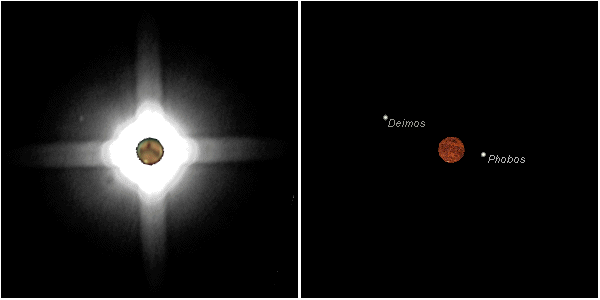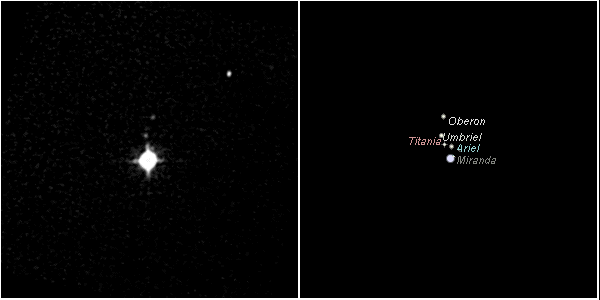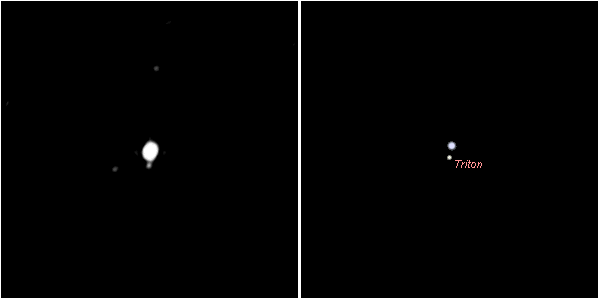
THE MOONS OF MARS, URANUS & NEPTUNE
30th Aug 2003
The Images were taken from a
dark sky site (3) near Caldbeck Cumbria with Vixen VC200L and focal reducer at f6.3 and my "Pipcam" SC1 long exposure modified Vesta webcam. The simulations (right) are from Redshift 3. The field of view is approximately 4.5 arc min square. North is up. In all images, the planets were less than 20 degrees above the horizon.
MARS & DEIMOS
23:35 UT

The main image is 11 frames at 1.5sec. To capture Deimos, Mars had to be hugely overexposed (Deimos is only 12km diameter and is over 500,000 times fainter than Mars!) A correctly exposed image of Mars taken at the same time has been overlaid (28 frames at 1/100 sec). Phobos is lost in the glare of Mars.
URANUS & MOONS
22:55 UT

To show the moons most clearly, 2 sharpest frames of 20sec exposure were selected from 28. Oberon, Umbriel and Ariel can clearly be seen. Titania is lost in the diffraction spike from the telescope secondary support and Miranda is lost in the glare of the over exposed Planet. The moons are around mag +14, some 2000x fainter than Uranus
NEPTUNE & TRITON
22:30 UT

A composite of the 10 best frames from 29 at 20sec exposure. Triton is clearly visble south of the planet. The planet's oval shape is caused by atmospheric refraction. Neptune's second moon Nereid is outside the field of view, but at Mag +19 is a difficult target to image and would not be captured in this length of exposure.
![]()